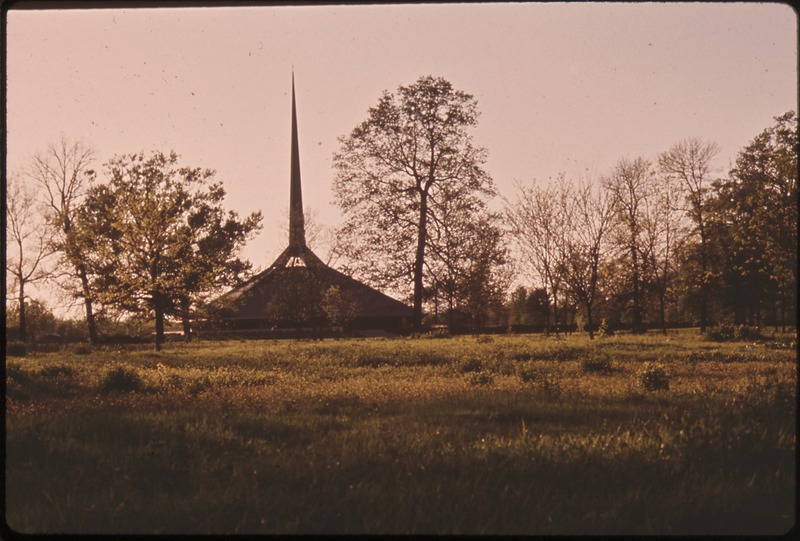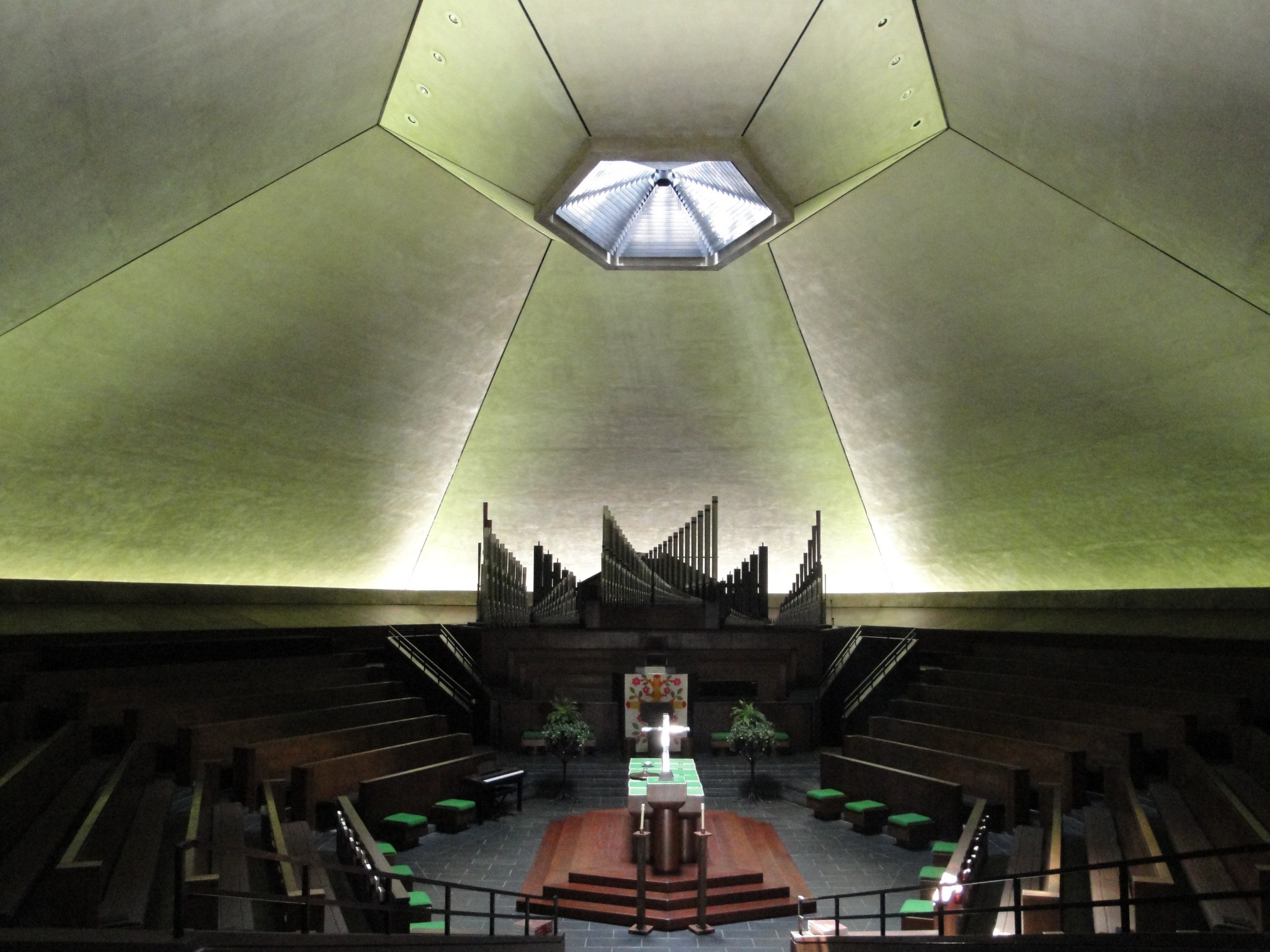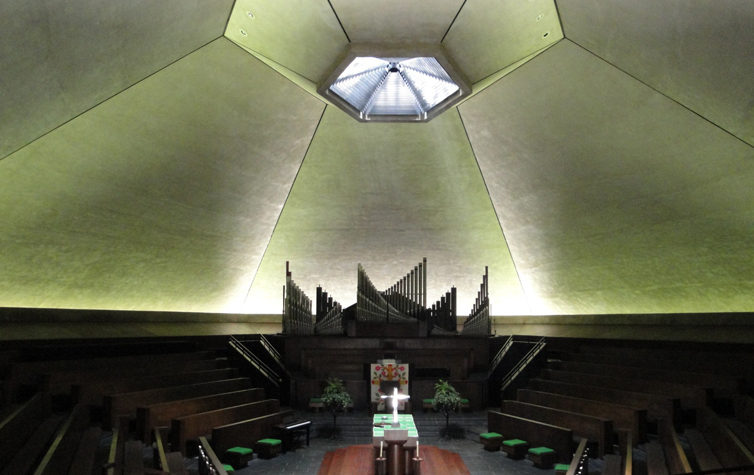
I love the generosity of public spaces and landmarks, whether natural or manmade. There’s something equalizing about being able to enjoy a beautifully designed space, whether your home is filled with originals, budget-conscious reproductions or you’re slowly saving your pennies and drooling over pictures in Atomic Ranch. We’re starting up a Retro Road Trip column to bring you more of the midcentury modern architecture you love that is actually open to you. All you have to do is get there, and if you’re anything like me, that’s half the fun. Buckle up, turn up the tunes and read up on our first destination: The North Christian Church.
Destination: Eero Saarinen’s North Christian Church | Columbus, Indiana
You might call it Eero Saarinen’s swan song. The last building he designed, it was also one Saarinen thought of as among his best work. If imitation is any indication, then time has agreed: It is also one of the most copied buildings of the midcentury, perhaps because it so beautifully reclaims the symbolic richness of past church architecture in a stunning and functional modern vernacular.
Clearing the Clutter
If you’ve ever stepped into a cathedral, you know the architecture of churches past are vast and breath-taking. They are also highly symbolic, meant to both physically and spiritually reorient those within it. From an aerial view, they are shaped like a cross, and the focal point and dome is over the altar, where there is often a cross or crucifix and where communion happens. If you’ve stepped inside a modern church, particularly an American Protestant one, you will generally notice a utilitarian approach to the space meant to accommodate a variety of activities.
When North Christian Church hired Eero Saarinen to design their church building, he noticed this trend and saw modern church designs left something to be desired. Always looking to simplify and eliminate unsightly clutter, Saarinen wanted the church design to reclaim a unified architectural emphasis.

In Eero Saarinen on His Work, he explains, “In the 11th and 12th centuries, there was the cathedral and it was the significant thing. Maybe it had a cloister or a priory or some little low building off to the side, but the cathedral building itself dominated everything. Today, there are Sunday school rooms and good-fellowship rooms and kitchens and gymnasiums and square dancing rooms and so forth. All these have tended to sprout into separate buildings and to get bigger and bigger and more and more important and finally, the church itself has become an insignificant, and almost forgotten little thing.
“So, in this church, I would like to put all that activity downstairs. Maybe underground, hidden away and put only the sanctuary above ground and make it the significant visual and architectural thing.”

Medieval Refrains in a Modern Key
Like the churches of the past, the interior of this one centers around communion. Outside, the building’s design communicates unity of form, culminating once again in a cross.
Saarinen explains, “With this kind of central plan, I think I would like to make the church really all one form: all the tower. There would be the gradual building up of the sheltering, hovering planes becoming the spire. The spire would not be put on a box or come up from the sides of the roof, as we did at Stephens College. The whole thing, all the planes, would grow up organically into the spire.” The 192-foot tall spire stretches upwards with a gold cross at the top over 5 feet tall.
Unlike the medieval churches, North Christian Church is a hexagonal shape. The shape accommodates the church’s modern needs for both space to gather as a congregation in the main level and room for Sunday school, fellowship halls and gym in the basement. The hexagonal shape allows for the vaulted, upward-angled ceiling seeming to grow into the spire, whose base provides the central light for within the sanctuary. Visually, the angular shape of a hexagon also suits the modern vernacular.
In 2000, the church was added to the National Register of Historic Places. Today, the church remains active and is also open to the public for tours.












